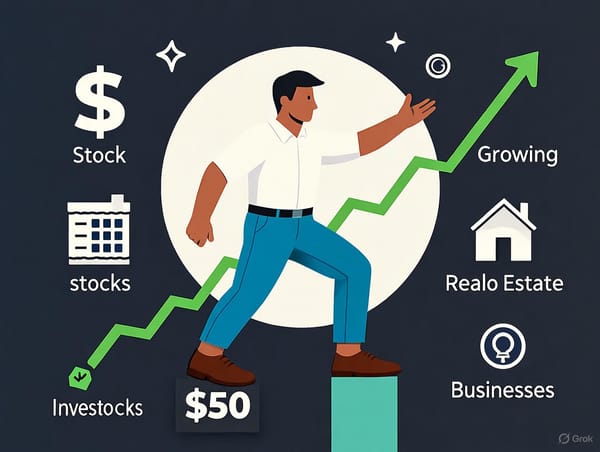The Hidden Triggers
Beneath every choice lies a web of hidden triggers—biological instincts, past echoes, and emotional hungers—waiting to be uncovered and guided toward a life of purpose.

We like to think we’re in control. Every day, we make choices—what to eat, how to respond to a text, whether to take that job offer—and we assume they’re the product of rational thought. But beneath the surface, there’s a quiet orchestra of unconscious forces playing a tune we rarely hear. Biological instincts, past experiences, and emotional needs hum in the background, shaping our decisions in ways we don’t always recognize. In this article, we’ll peel back the layers of these hidden triggers, explore how they work, and discover how to harness them to live with greater intention.
The Silent Power of Biology
Let’s start with the basics: you’re an animal. Yes, a sophisticated one with Wi-Fi and a coffee obsession, but an animal nonetheless. Your brain is wired with instincts that have kept humans alive for millennia. These biological triggers don’t care about your five-year plan—they’re focused on survival, reproduction, and immediate comfort.
Take hunger, for example. You might think you chose that mid-afternoon donut because it looked good, but your brain’s reward system, fueled by dopamine, was likely screaming for a quick hit of sugar to boost your energy. Or consider the fight-or-flight response. That snappy email you sent to a coworker? It might’ve been less about their tone and more about your amygdala sensing a threat to your status or security.
These instincts aren’t flaws; they’re tools. The trick is noticing when they’re driving the bus. Next time you’re about to make a snap decision, pause. Ask yourself: Is this my body talking—hunger, fatigue, adrenaline—or is it me? Recognizing the biological baseline gives you a foothold to climb above it.
The Echoes of Yesterday
If biology is the foundation, your past experiences are the walls that shape the house of your mind. Every moment you’ve lived—every triumph, embarrassment, or quiet lesson—leaves a mark. These marks become filters through which you see the world, often without you realizing it.
Think about a time you avoided something that seemed risky. Maybe you passed on a public speaking gig because, years ago, a presentation went south and the sting still lingers. Or perhaps you’re drawn to certain people because they echo a comforting figure from your childhood. Psychologists call this the influence of implicit memory—things you don’t actively recall but that steer you anyway.
Here’s where it gets fascinating: these echoes aren’t always logical. A single bad experience with a dog might make you tense around every pup, even if you know most are harmless. The past doesn’t care about fairness; it just wants to protect you. To spot these triggers, try this: when you feel an unusually strong reaction—dread, excitement, avoidance—ask, “Where have I felt this before?” Tracing the thread back can reveal the memory pulling the strings.
The Hunger for Emotional Needs
Beyond biology and history lies a third force: your emotional needs. We’re social creatures, hardwired to seek connection, validation, and meaning. These needs can be subtle puppeteers, nudging you toward choices that fill an inner void.
Ever said yes to a favor you didn’t have time for? That might be your need for approval talking. Or maybe you scroll social media late at night, chasing a sense of belonging through likes and comments. These aren’t just habits—they’re emotional cravings dressed up as decisions.
The philosopher Alain de Botton once said, “We are creatures who can’t fully understand ourselves.” That’s true here. Emotional needs often hide behind noble excuses. You might tell yourself you’re working late for the paycheck, but deep down, it’s about proving your worth. The key is honesty. Name the need—security, love, significance—and you’ll start to see when it’s calling the shots.
Shining a Light on the Shadows
So, we’ve got instincts pushing us, memories pulling us, and emotions whispering in our ears. It’s a lot. But here’s the good news: awareness is power. Once you spot these hidden triggers, they lose some of their stealth. They don’t vanish—nor should they—but you get to decide how much they steer.
Start small. Pick a routine choice, like what you eat for breakfast. Is it habit (past experience), a craving (biology), or a bid to feel good (emotion)? Break it down. Then experiment: tweak the choice and see how it feels. Over time, this practice builds a muscle—call it trigger literacy. You’ll catch the patterns faster and respond with purpose instead of reflex.
Steering with Purpose
Identifying your triggers isn’t about silencing them. They’re part of you—wild, messy, human. The goal is to make them allies, not dictators. Want to chase a big dream but fear holds you back? Thank your instincts for keeping you safe, then gently nudge them aside. Feel a past failure creeping in? Acknowledge it, then choose a step that defies its story.
This is where intention comes in. Triggers thrive in the dark, but purpose is a flashlight. Set a clear vision—say, living healthier or building deeper relationships—and let it guide you. When the unconscious tugs, check it against that vision. Does this choice align? If not, pivot. It’s not about perfection; it’s about progress.
The Freedom in Knowing
There’s a quiet liberation in understanding what drives you. Decisions stop feeling like mysterious impulses and start looking like puzzles you can solve. You’re not erasing the hidden triggers—biology, memory, and emotion will always be there—but you’re stepping into the driver’s seat.
So, next time you’re at a crossroads, big or small, take a breath. Listen for the hum beneath your thoughts. What’s really pushing you? What’s pulling you back? Then decide—not as a puppet of the unseen, but as someone who’s learned to dance with the strings.





